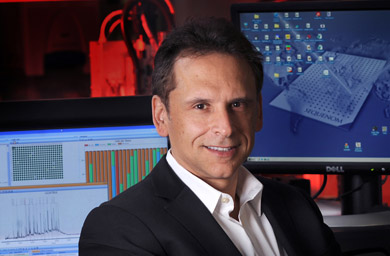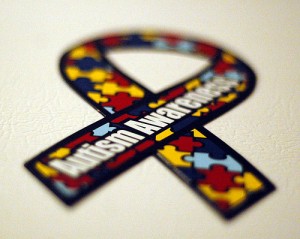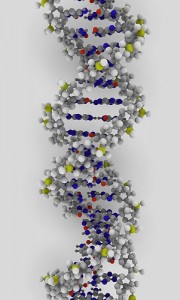While the field of psychiatry has helped us understand disorders that affect millions of people around the world, Dr. Jordan Smoller argues that it has also failed us in many ways. In particular, he argues that we should be focusing more of our efforts on how the “normal” brain works.
Only then, he believes, can we truly understand what disorders really are. In fact, we are beginning to understand that disorders are often mere exaggerations or variations in “normal” brain function.
The Interview
It’s good to speak with you Dr. Smoller. Thanks for the opportunity.
Thanks Carter.
So the central point of your book, The Other Side of Normal, is that we can’t really understand what a psychological disorder is unless we first understand what the brain was “designed” to do in the first place. Could you elaborate on that a bit?
 That’s right—my claim is that only by understanding the normal can we make sense of what’s abnormal. And, believe it or not, that’s really a change in perspective from what psychiatry has done for the last 100 years, which is to focus on the unusual, the bizarre, the extremes of human behavior and to use that to classify disorders, without paying much regard to where those things come from. The result is that our diagnoses are based on constellations of symptoms that are agreed upon by a consensus of experts.
That’s right—my claim is that only by understanding the normal can we make sense of what’s abnormal. And, believe it or not, that’s really a change in perspective from what psychiatry has done for the last 100 years, which is to focus on the unusual, the bizarre, the extremes of human behavior and to use that to classify disorders, without paying much regard to where those things come from. The result is that our diagnoses are based on constellations of symptoms that are agreed upon by a consensus of experts.
As you may know the question of normal and abnormal has recently been in the news a lot because the field of psychiatry is in the process of revising the manual that all psychiatrists and psychologists use to define and diagnose mental illness—the diagnostic and statistical manual of mental disorders or DSM.
 And there’s a tremendous amount of controversy about this. How narrowly should we define autism, can children have bipolar disorder? The problem is that when we’re trying to answer these questions without connecting them to how the brain and the mind work, we end up with judgments that are sometimes based on historical tradition and cultural trends or the opinions of authorities.
And there’s a tremendous amount of controversy about this. How narrowly should we define autism, can children have bipolar disorder? The problem is that when we’re trying to answer these questions without connecting them to how the brain and the mind work, we end up with judgments that are sometimes based on historical tradition and cultural trends or the opinions of authorities.
And what I’m claiming is that we need to take a step back and start from the bottom up to look at normal and what the brain and the mind were designed to do, how they normally function. Without that we end up with a view of mental illness that is unstable.
Now obviously what always gets brought up here is the fact that homosexuality was once considered a disorder. So it’s an issue here, where do we draw the line between “normal” variation and disorder?
Variation itself is a key component of evolution, for one, perhaps something we shouldn’t be interfering with in the first place. One example that comes to mind for me is the autism spectrum. Some experts claim that people like Newton, Einstein, and perhaps even modern successes like Mark Zuckerberg, could reside somewhere on the autism spectrum.
What’s your take on that?
Well, I can’t comment on the specifics of those individuals, but we do know that autism is not a yes or no category. Studies are increasingly showing that autism-related traits appear to be normally distributed in the general population.
It’s clear that many people with autism are profoundly disabled. But there is a broad spectrum of severity, and, at the milder ends of the spectrum, there don’t seem to be sharp boundaries between “normal” and “abnormal” social and cognitive functioning. A key component of the autism is a limitation in understanding that other people have their own thoughts and beliefs and recognizing that those thoughts and beliefs can be different from yours.
 Scientists call that having a “theory of mind”. And we have circuits in the brain that specialize in thinking about other people’s thoughts and peering into other people’s brains. Much of what we understand as autism has to do with a variation or dysfunction of that system—a problem with understanding that people have their own thoughts and therefore being able to engage in certain social relationships that we might otherwise take for granted.
Scientists call that having a “theory of mind”. And we have circuits in the brain that specialize in thinking about other people’s thoughts and peering into other people’s brains. Much of what we understand as autism has to do with a variation or dysfunction of that system—a problem with understanding that people have their own thoughts and therefore being able to engage in certain social relationships that we might otherwise take for granted.
It’s a good example of how problems that may have seemed mysterious begin to make sense when we look at them against the backdrop of how our minds normally function. The more we learn about how the mind works, the more we see that there are no bright lines between normal and abnormal. Many of the things that we see as psychiatric disorders are really variations of the same systems that we use to navigate the challenges of everyday life.
Now, you’re the Director of Psychiatric Genetics in the Department of Psychiatry at Massachusetts General Hospital. We typically think of genetics and psychiatry as two very different disciplines. How are these coming together, and how important would you say biology is to an understanding of human behavior?
Well, first I would say that genetic variation is clearly very important in our understanding of human behavior and psychiatric disorder. We’ve long known from studies of families and twins that essentially all psychiatric disorders can run in families and that genes contribute to risk for these disorders—everything from autism to Alzheimer’s.
 But its only in the past few years that researchers have been able to discover specific genetic variations that contribute to these disorders. Newer technologies that allow us to examine the whole human genome have begun to identify DNA sequence variations that increase the risk of disorders like autism, schizophrenia, and bipolar disorder.
But its only in the past few years that researchers have been able to discover specific genetic variations that contribute to these disorders. Newer technologies that allow us to examine the whole human genome have begun to identify DNA sequence variations that increase the risk of disorders like autism, schizophrenia, and bipolar disorder.
At the same time, we know that genes are not destiny. One of the most fascinating areas of neuroscience has been revealing how our experiences–what happens to us in life–affects the wiring of our brains and even the functioning of our genes.
The second point is that, while biology is clearly crucial to understanding human behavior, we can’t reduce it all to biology and chemistry. It’s true that the mind has a physical basis in the brain, but it’s also clear that many of the things we care about involve levels of meaning that aren’t fully described by talking about brain circuits and genes.
As I say in the book, “A purely biological account of the complex human experiences of love, empathy and so on will never be a fully adequate account, in the same way that a detailed account of the wavelengths of light reflected by each pigment in Picasso’s Guernica would not address the beauty or power of the painting.”
Another thing that interests me about all this is where it starts to get harder to tell the difference between a “mental” disorder and a “brain” disorder. For example, if you have somebody with limited capacity in their frontal lobe, it’s difficult for them to inhibit their other brain functions.
So they may not be able to restrain impulsive anger, or they have trouble focusing on one particular task. We would normally call impulsiveness a “mental” problem, something that they ought to be able to control if they just tried harder.
But if the physical networks in the brain just aren’t there, this may be impossible for them. How much of behavior, then, can we hold a person responsible for, and are we making a mistake by trying to get people to change certain behaviors when the obstacles might actually be physical, rather than mental?
That’s an interesting question. Of course, at some level, all of our behaviors –normal and abnormal–have a “physical” basis in the sense that they emerge from the activity of our brains and bodies. But your question raises an important issue about the moral and social implications of neuroscience discoveries—that is, if we find that behavior has a neural or genetic basis, does that mean that we can’t change it or hold people responsible for their behavior?
 I think the answer is no. First of all, the fact that some trait or disorder has a biological basis doesn’t mean it can’t be helped. To take a dramatic example, the genetic disease phenylketonuria can cause brain damage early in life but this can be avoided by removing the amino acid phenylalanine from a baby’s diet.
I think the answer is no. First of all, the fact that some trait or disorder has a biological basis doesn’t mean it can’t be helped. To take a dramatic example, the genetic disease phenylketonuria can cause brain damage early in life but this can be avoided by removing the amino acid phenylalanine from a baby’s diet.
But a more familiar example would be addictions to cigarettes or drugs—these are heritable and biological problems, but without access to the addictive substance, someone who is predisposed to have them won’t develop the problem.
At the same time, understanding the biological basis of disorders can reduce stigma and shame. There are important examples of this when it comes to psychiatric disorders. Fifty years ago, many in the field blamed autism on “refrigerator mothers” who caused their children to withdraw from social relationships and schizophrenia was blamed on “schizophrenogenic mothers” who didn’t love their children.
In hindsight, these ideas seem absurd, but they caused untold shame and grief to families before insights from neuroscience and genetics overturned them.
And when it comes to moral responsibility, the fact that a behavior may have biological roots doesn’t mean that we can’t treat it as unacceptable or even criminal. Just because sexual infidelity may have been favored in our evolutionary past doesn’t mean that in our modern day civilization, we have to throw up our hands and say, well that’s the way evolution made us. And a condition like pedophilia may have to do with brain function, but doesn’t mean we shouldn’t outlaw it.
Okay, we’ve asked some big questions here today, but I’m sure what most people want to know is what they can do with this information. How is this new way of approaching the science of the mind affecting the way we approach issues like these? If what we call “disorders” are actually exaggerations of problems (or even skills) we all have, how can we put this knowledge to use?
There are several implications of this approach that I think can be useful.
First, I give several examples in the book of how an understanding of the biology that shapes human development and behavior can shift our perspective on our own lives and relationships.
 For example, insights about the timetable of brain development and the existence of sensitive periods help explain why plunking your baby in front of videos and TV can actually be counterproductive (read the book to see why). We are also learning how early adversity and toxic stress can have longslasting adverse consequences for our emotional and social lives and why nurturing and consistent caregiving are essential to promoting resilience.
For example, insights about the timetable of brain development and the existence of sensitive periods help explain why plunking your baby in front of videos and TV can actually be counterproductive (read the book to see why). We are also learning how early adversity and toxic stress can have longslasting adverse consequences for our emotional and social lives and why nurturing and consistent caregiving are essential to promoting resilience.
An appreciation of what I call “the biology of normal” can also help us develop new ways to relieve suffering. Take the sample of fear and anxiety–we all experience fear and anxiety in various situations. It’s part of the human condition. And that’s because our brains evolved to be tuned into detecting danger and avoiding harm. And we have circuits in the brain that are dedicated to this.
But sometimes those systems go awry—and that’s essentially what happens for someone who has an anxiety disorder-–like panic disorder or phobias. Our normal threat detection systems go into overdrive. We now have a good understanding of how our fear circuits are wired and how neurotransmitters and other factors help us lay down emotional memories of either fear or safety.
One of the most widely used treatments for anxiety disorders is something called cognitive behavioral therapy (CBT). It’s based on helping people learn to extinguish irrational fears by a process of new emotional learning that overrides these fears.
A few years ago, a group of scientists had a hunch that they could “turbocharge” therapy by boosting the brain’s system for extinguishing fears. They found that a drug, originally developed to treat tuberculosis, can mimic a key chemical involved the biology of emotional learning. The pill, called d-cycloserine, works by helping a neurotansmitter called glutamate lay down new memories.
If you combined this with CBT, maybe you could help people learn to extinguish their fears and phobias. And in fact, there have now been a number of studies showing that if you take this pill an hour before your therapy session, it can speed up the effect of this psychotherapy for a variety of anxiety disorders and other conditions. By hacking into our normal systems for emotional learning, we can help people recover from devastating anxiety.
And finally, I think understanding the broad spectrum of human behavior and its roots in our shared biology can demystify mental illness and, as I say in the book, “allow us to see ourselves and each other with compassion and wonder.”
Take a look at The Other Side of Normal: How Biology Is Providing the Clues to Unlock the Secrets of Normal and Abnormal Behavior
The Black Hole as a Creator? Dr. Caleb Scharf Explains